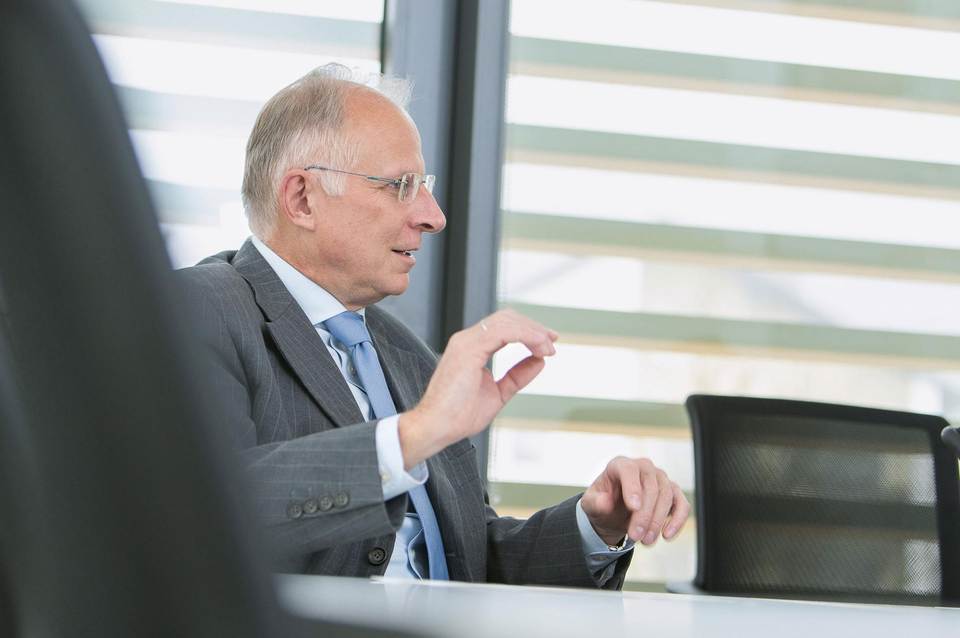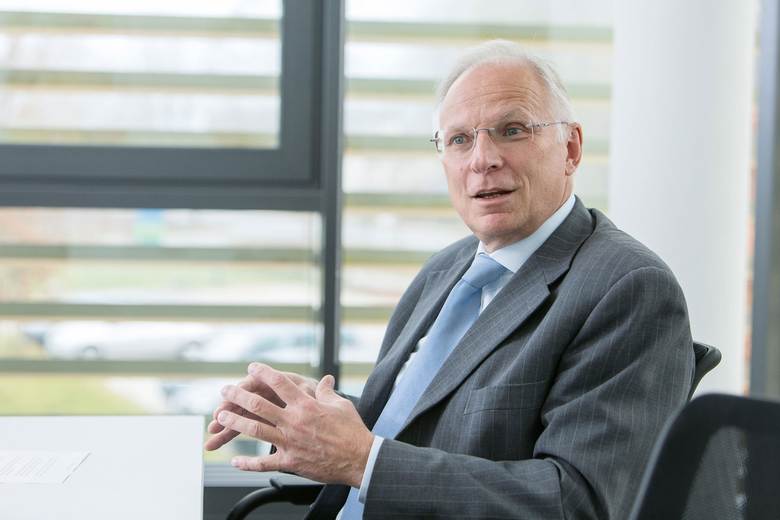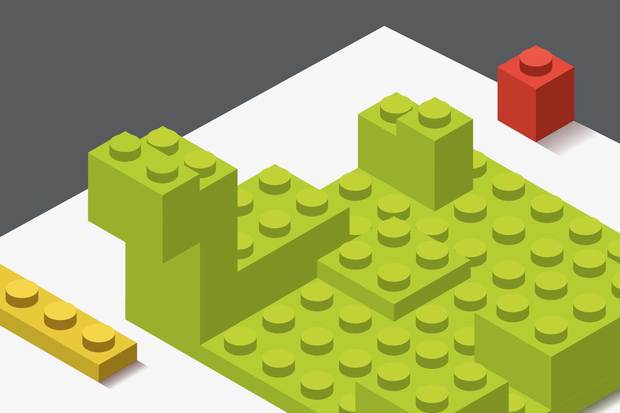KHS competence: Professor Langowski, your fields of research include plastics in packaging technology and information technology for the operation of filling systems. What does the one have to do with the other?
Prof. Dr. Langowski: Both are important fields in filling and packaging technology. In information technology we study interfaces with regard to machine control, data acquisition, simulation and much more. Plastic packaging on the other hand forms an interface between the content of the pack and its environment. This leads us to the topic of what consumers expect, especially of beverage packaging.
If we take a look ahead, where is packaging material in the beverage industry going?
Many consumers want packs to be light and convenient. Things will thus continue to move in this direction. There will also be more individual bottles, also in the returnables segment. However, another thing that’s clear is that we won’t be seeing the kind of uniform packaging we once used to imagine – light, easy to recycle, or reuse. I’m pretty sure that cans will also experience a comeback.
Where do you think the strength of the can lies?
In its convenience but also because the can is convincing on aspects of product protection, especially protection against light and oxygen.
This leads us to the topic of what consumers expect, especially of beverage packaging.
Consumers make a lot of demands. Some would like light bottles. They don’t want to drag heavy crates of beverages up five flights of stairs to their apartment. Others want packaging to be simple to handle and have easy-open closures. There’s also the health awareness section of the population which sets great store by products which are as natural as possible. And all those who have certain image requirements of the produce they consume. This group of people favors particularly high-quality beverage packaging.
What do you personally prefer?
It depends on the product. I’m forced to buy fruit juice in glass bottles from the beverage store around the corner as this is the type of container my preferred supplier uses. However, I do buy mineral water in one-way PET bottles. So far I’ve hardly tried wine in PET; you have to look long and hard to find something like this. My love of this packaging material doesn’t go that far yet!

Metal, glass, plastic – what’s the best possible material for beverage packaging?
If we look at the materials side of beverage packaging, then PET – especially one-way PET – is definitely still on the rise. Consumers who don’t want plastic often say “We buy our beverages in glass bottles.” This isn’t thinking far enough, however, because glass bottles have a plastic cap or metal closure with a plastic seal. We can hardly do without plastic; this material is always included.
I’m always a bit skeptical when it comes to making strict distinctions between metal, glass, and plastic, as we’re also developing multi-layer materials. The result is then often a heavily adapted, customized material comprising several layers which may include one or more layers of PET. Bearing this in mind, I don’t think that there’s only one optimum packaging material.
Your department works on projects which investigate the interaction between food, packaging, and the environment. How does PET measure up in this field?
My interaction specialists consider PET to be an ideal material. Of all the plastics PET is the best by far. If I simply factor in all the aspects – which plastic has the fewest additives, is the most temperature stable, uses the lowest quantities, and much more besides – I keep returning to PET. No question about it: PET is a very sustainable, future-proof material.
What do you think are the greatest challenges facing the packaging industry?
There are several. Consumers expect packaged products to pose no health risks and be safely packed. The ingredients must not react with the packaging materials. The demand for inert packaging materials will continue to increase. This is a challenge which I consider to be an ongoing job.
Another thing is that sustainability is called for. I quite consciously say this in a slightly relative sense as it’s not that one type of packaging is generally more sustainable than another. Today, this property is often appraised more by image than by fact.
In addition, we also have to ultimately manage to use even fewer materials. This isn’t just a question of weight but also of saving on resources and recycling.
Speaking of recycling, Germany is well ahead here.
Right. The media often give the impression that certain problems wouldn’t exist if we did away with plastics or further developed their biodegradability. In reality, however, everything depends on whether a country can manage to create an infrastructure which guarantees a waste disposal concept geared towards ecology.
What about international recycling efforts?
I don’t think that there are many countries where the recycling levels are as high as in Germany – especially for PET. Here, it’s very easy to achieve high recycling rates because we have the bottle deposit system, also for non-returnable beverage bottles. All told, there are many factors which influence this subject, up to and including the geographical structures in a country which may possibly involve vast distances for transportation. An optimum recycling rate is simply the result of many factors. Material properties make up just a small part of the whole.
Which market opportunities do you see for the relatively expensive organic plastics produced from renewable raw materials?
Do you mean raw materials which in principle could act as direct substitutes for PET – what’s known as organic PET, for instance? At the moment about half of this is made from renewable raw materials, mostly sugar cane. We could surely also produce replacement materials originating entirely from renewable raw materials. At some stage we’ll need them, considering that the natural source of crude oil on which the original plastic product is based is not inexhaustible.
And what about biodegradability?
This is something where I ask myself if we need this biodegradability. Composting is not implemented at all in many countries. And even where it is, why should packaging be composted where it can be recycled or used to make energy? What’s the point of releasing the energy stored in the plastic packaging to the atmosphere through a few microorganisms and not retaining any of it? In many cases, for me approaches like these are idealized or simply just marketing.
Back to recycling: the use of recycled PET to make new PET bottles is to be increased.
We’re running projects on this at our institute, where our Product Safety and Analytics Department is responsible. What’s important are the appropriate cleaning stages. These also involve returning the plastic to a state in which it can be processed as it was first off. Heat treatment and vacuums ensure that the polymer chains repair themselves. This is one very pleasant property of PET which other plastics don’t have.
Germany’s RAL quality mark requires that PET bottles contain at least 25% PET bottle recyclate. Can this figure be improved on?
Yes. However, this is a figure which I actually have an inner aversion too. Because it’s just a figure. There are many general conditions which play a role here, such as the cost of transportation. The rate of recyclate as the sole indicator of how sustainable or ecologically friendly a process is short sighted in my opinion.
After appropriate and careful consideration, would it be theoretically feasible to use 100% recyclate?
Technically speaking, 50% is absolutely no problem and 75% probably possible. I could well imagine there also being bottles consisting of 100% recycled material. It depends on the effort needed to collect and sort them, however, which may demand the use of additional energy, for example. Here, as in any other process, you have to meticulously calculate whether the effort and result are in any sensible proportion to one another.
If PET bottles become increasingly lighter, what’s feasible regarding weight?
It’s probably possible to make the bottles a little bit lighter but the whole process has to be precisely balanced. The crux is that the bottle must be stable from a consumer’s point of view. And this has physical limitations. Very light bottles are good to use with carbonated beverages. The entire system is then relatively stable thanks to the interior pressure formed by the carbon dioxide. However, maybe 50 out of 100 consumers grip the bottle quite hard when they unscrew the cap. They are then showered with liquid and the popularity of packaging like this suddenly plummets.
Which requirements does individualization make?
I see individualization becoming a core trend in the next few years. Here, we have to ask how we can get these individualized products to the consumer at an acceptable cost. This is a logistical task – from the ordering process to delivery. There’s also a production-related element in all this; it must be possible to trace products to be able to prove that the individual content has been supplied in exactly the required form.
Individualization doesn’t necessarily mean that the content has to vary. Packaging can be personalized by the bottle print, for example.
That’s true, by the direct print process or with an individual label. This is the first step. The second could be to mix an individual beverage. Here, however, we’re still only scratching the surface and lots of interesting opportunities await.
Many thanks, Professor Langowski, for this insight into your scientific research and for your prognoses, especially on PET packaging.
The Interview was conducted by Jörg Michael Pläsker.
“The optimum recycling rate is the result of many factors.”
Your contact on this topic
Jörg Michael Pläsker
blackpoint communications gmbh
Phone: +49 2331 803 97 36
Email: plaesker@black-point.de

























